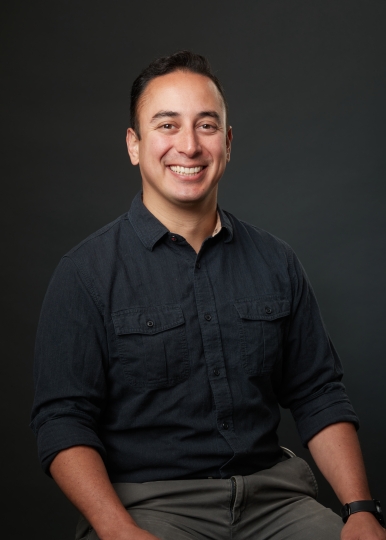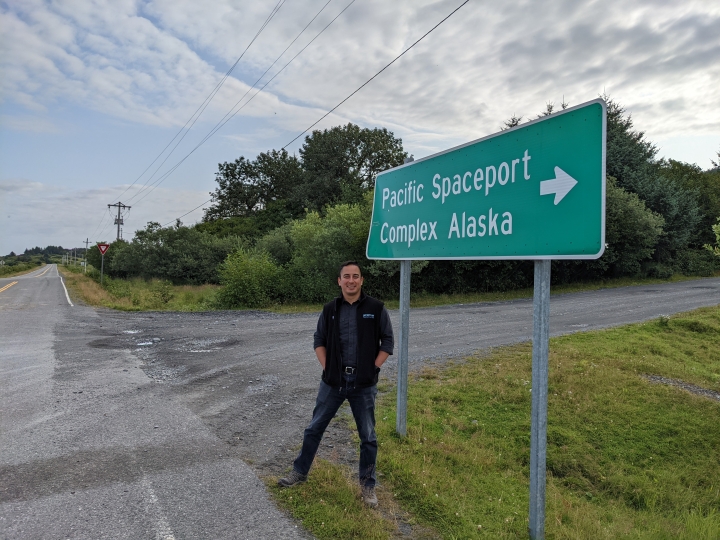Francisco Isenberg, S.B. ‘06
In the emerging field of commercial spaceflight, many of the challenges companies address have never come up before, requiring novel solutions.
Devising new solutions to complex problems has always driven Francisco Isenberg, S.B. ’06, who honed his systems thinking skills while studying materials science and mechanical engineering at the Harvard John A. Paulson School of Engineering (SEAS).
Identifying all the different stakeholders and designing solutions that address as many different needs as possible is essential in Isenberg’s current role with launch and space services company Astra. Since 2021, he’s worked as both Principal Developer for the company’s physical spaceports, as well as Principal for business development with potential customers.
“Solving new problems is fun for me,” Isenberg said. “Solving new problems in an industry that I think has the potential to change the world, is also very rewarding. I want to make it easier for every company to get to space, because it’s one of those things that unites humanity.”
A native of Long Island, N.Y., Isenberg always knew he wanted to study science or math in college. Physics formulas he’d learned in high school “explained to me how the world works,” he said, but engineering wasn’t a field he considered until he took “ES51: Computer-Aided Machine Design” as a freshman at SEAS.
“That was the class that solidified what I wanted to do with my life,” he said. “The final project was to design a remote-controlled race car, and then your grade was based on what place you came in when you raced all your classmates. You could take that understanding of physics and how things work and apply it in a real-world application.”
Following graduation, Isenberg did a year-long fellowship at Ewha University in South Korea. He didn’t go into spaceport design immediately upon his return, but the first big step to Astra happened when he became a mechanical engineer for the New York architecture and engineering firm H2M in 2008. Isenberg focused on plumbing and HVAC (heating, ventilation and air conditioning) with H2M, but the experience taught him how buildings are actually designed and constructed.
“H2M was a full-service company, so not only did we do the engineering and architecture, but we’d also bid out the jobs, select the contractors and then do the construction management,” he said. “So I gained experience at all levels of the industry.”
That experience proved critical for Isenberg, as he met up with classmates Brenden Millstein and Raphael Rosen at a Harvard five-year reunion. The duo were starting a company focused on renewable energy solutions for buildings, but they needed someone who understood the ins and outs of building construction.
Almost on a whim, Isenberg agreed to move to California and become the first employee of Carbon Lighthouse. When he left the company nine years later, he was Executive Vice President of Technology.
“My first role there was helping put together energy efficiency projects for buildings, run studies, and then once we found projects to implement, hire contractors and manage construction,” he said. “It eventually became apparent that we needed to build our own software that could run the models for our projects and go deeper into machine learning and artificial intelligence. I decided to take that on, so I became a software product manager as well.”
At Astra, Francisco Isenberg has helped develop commercial spaceports at Cape Canaveral in Florida and the Pacific Spaceport Complex in Alaska.
Isenberg now uses all that construction and design knowledge at Astra. Spaceport management requires an understanding of physical layout and government permitting procedures, both of which he had to learn at H2M and Carbon Lighthouse, while still requiring the kind of systems thinking at the core of his education at SEAS.
“Construction management definitely helped me know how to manage lots of different pieces and know when to back off and when to push when negotiating,” he said. “Also, there are very few people that have ever worked in spaceports as a career. There are lots of new and unique problems where, even if they’ve been solved once with one organization, they won’t necessarily work at Astra. So, I was able to take that nebulous problem solving that I learned, even going back to my mechanical engineering degree at Harvard, and combine it with my construction management knowledge.”
Astra has launched five missions in the last year from Cape Canaveral in Florida and the Pacific Spaceport Complex in Alaska. The company has contracted with both government agencies such as NASA and the U.S. Space Force, as well as Spaceflight, a private launch company.
“A big part of what I worked on was bringing the Cape Canaveral spaceport online for Astra,” Isenberg said. “We’d been told that it would take 3-5 years to be able to launch from Cape Canaveral. We managed to do it in a matter of months, and we were really proud of that.”
Commercial spaceflight and orbital launches will likely continue to grow in the coming years. With Isenberg’s background, he’s poised to help Astra grow right along with the rest of the industry.
“There are a variety of opportunities that we’re working on,” he said. “If we do it well, and focus on improving the world, it could be really cool that I played a small part in that.”
Press Contact
Matt Goisman | mgoisman@g.harvard.edu

